Last updated: September 2025
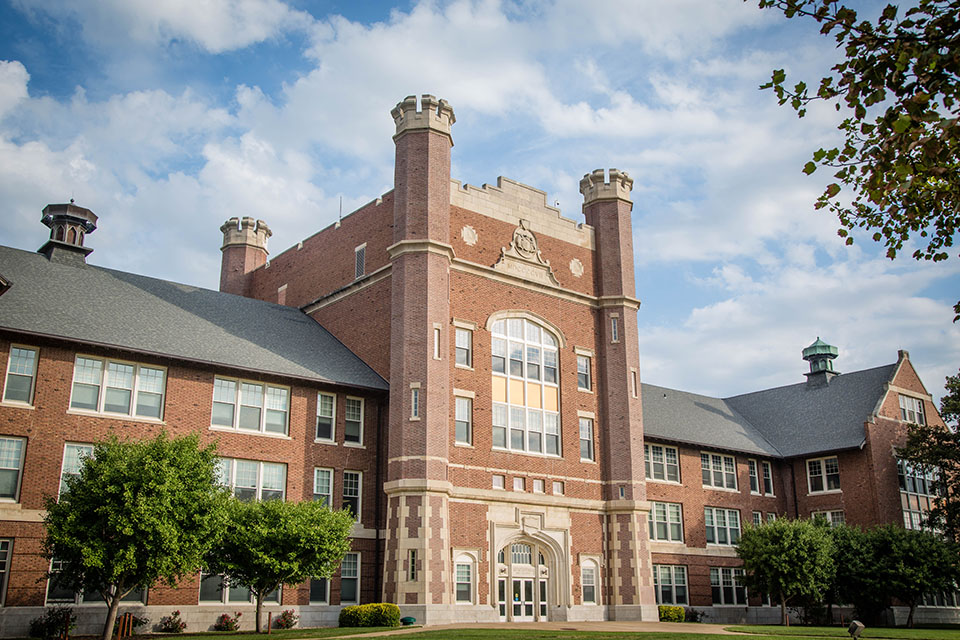 Constructed between 1907 and 1910, this Tudor Gothic structure with four towers is a landmark of the campus and was added to the National Register of Historic Places in 2010. In 1979, a fire destroyed the north wing, which contained the Deerwester Theater, and the west wing, which was largely restored; subsequently, the second and third floors underwent an extensive renovation in 1996. The historic building houses the offices of Admissions, Career Services, the Registrar, Scholarships and Financial Assistance, Human Resources, and University Marketing and Communication as well as the Graduate School office and various administrative offices, including the offices of the president and provost. The third floor also houses nutrition and dietetics courses in addition the offices of Institutional Research and Effectiveness and Information Technology.
Constructed between 1907 and 1910, this Tudor Gothic structure with four towers is a landmark of the campus and was added to the National Register of Historic Places in 2010. In 1979, a fire destroyed the north wing, which contained the Deerwester Theater, and the west wing, which was largely restored; subsequently, the second and third floors underwent an extensive renovation in 1996. The historic building houses the offices of Admissions, Career Services, the Registrar, Scholarships and Financial Assistance, Human Resources, and University Marketing and Communication as well as the Graduate School office and various administrative offices, including the offices of the president and provost. The third floor also houses nutrition and dietetics courses in addition the offices of Institutional Research and Effectiveness and Information Technology.
Total square feet: 96,702
Year opened: 1910
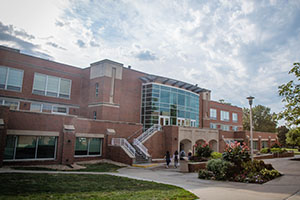 The opening of this structure in 1952 fulfilled a long-time dream of J.W. Jones, the sixth president of the University and was named in his honor in 1956. In 1966, an addition to the north more than doubled the size of the building, and the building underwent a complete renovation and reconfiguration of space between 1998 and 2000; the building's dining facilities underwent a complete remodel again during the summer of 2013 to add national brands and conveniences for students. The Student Union is a split-level structure with three floors. The basement is commonly referred to as the first floor, and the "ground floor" accessed from the east plaza is commonly called the second floor.
The opening of this structure in 1952 fulfilled a long-time dream of J.W. Jones, the sixth president of the University and was named in his honor in 1956. In 1966, an addition to the north more than doubled the size of the building, and the building underwent a complete renovation and reconfiguration of space between 1998 and 2000; the building's dining facilities underwent a complete remodel again during the summer of 2013 to add national brands and conveniences for students. The Student Union is a split-level structure with three floors. The basement is commonly referred to as the first floor, and the "ground floor" accessed from the east plaza is commonly called the second floor.
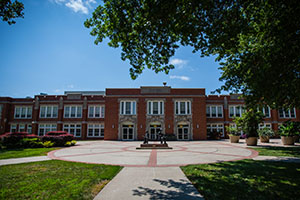
The building's second floor houses the offices of Student Involvement, Student Affairs and Campus Dining as well as the Student Engagement Center and the Bearcat Shop, which is managed by local retailer The Student Body and sells a variety of supplies and Northwest apparel. The Student Union Living Room on the second floor features a fireplace and serves as a social space for students and varied campus activities.
A second floor dining area, named The Jones, features McAlister’s Deli, Chick-fil-A and QDOBA Mexican Eats. Bearcat Commons on the first floor features a “ghost kitchen” among a variety of other dining concepts.
Meeting rooms on the building's third floor include The Carnahan Student Senate Chamber named for former Missouri Gov. Mel Carnahan; First Family Dining Room, Boardroom, Ballroom, Tower View Dining Room, Alumni Dining Room, and the Esports Lab; another set of meeting rooms are designated by letters A-E and written, for example, as Meeting Room A.
Total square feet: 121,788
Year opened: 1952
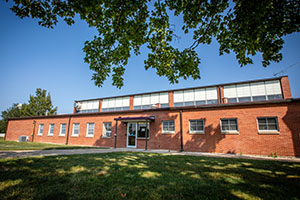 The Jon T. Rickman Electronic Campus Support Center, which is located across from Bearcat Baseball Field and the B.D. Owens Library, provides free-of-charge, in-person service to Northwest students and employees who have been issued University-owned notebook computers or tablets.
The Jon T. Rickman Electronic Campus Support Center, which is located across from Bearcat Baseball Field and the B.D. Owens Library, provides free-of-charge, in-person service to Northwest students and employees who have been issued University-owned notebook computers or tablets.
The building was dedicated in 1955 by former President Harry S. Truman as a Missouri National Guard Armory, which it housed until 2003. After being repurposed, it was renamed in 2008 for Rickman, who spent 35 years at Northwest, helped implement the University's “Electronic Campus” in 1987 and retired in 2011 as vice president of information systems.
Total square feet: 13,326
Year opened: 1955
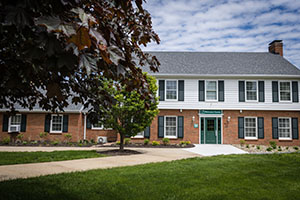 Located at the southeast entrance to campus, the building serves as a visitor center and contains offices for admissions staff.
Located at the southeast entrance to campus, the building serves as a visitor center and contains offices for admissions staff.
The center, which began as a living space for home economics majors to learn home management, is named for a graduate of the former Department of Family and Consumer Sciences who later served on the faculty and chaired the department between 1947 and 1971. As a student, Mabel Cook initiated the idea for Kappa Omicron Phi, now a national family and consumer sciences honor society called Kappa Omicron Nu.
Total square feet: 5,225
Year opened: 1962
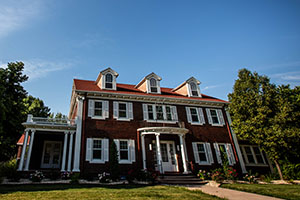 Located on College Avenue, the Federal-style structure is owned by the non-profit Northwest Foundation, and its offices are leased to the Office of University Advancement, which includes alumni relations and development operations.
Located on College Avenue, the Federal-style structure is owned by the non-profit Northwest Foundation, and its offices are leased to the Office of University Advancement, which includes alumni relations and development operations.
Previously known as the Alumni House, the building was renamed in 2017 in honor of Faust, a 1974 alumnus, after the completion of a 2,994 square-foot addition that includes staff offices and the Lawhead Conference Room, named for 1942 Northwest graduate Florence Abarr Lawhead, who served on the Northwest Foundation Board of Directors and was active in the Alumni Association.
The original structure stands on land purchased in 1926 by local businessman F.M. Townsend for the purpose of building a residence for his family. The residence, located directly across from the Thomas Gaunt House, was purchased by the Foundation in 1980 after a loyal group of alumni brought together their combined vision and resources to challenge all Bearcat alumni and friends to secure a permanent home for alumni activities and services.
Total square feet: 11,067
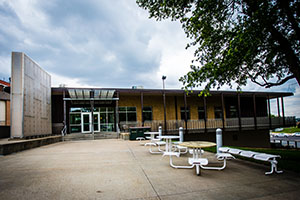 Opened as a cafeteria for high-rise residents, and known for periods as Taylor Commons, in honor of the University's third president, Henry Kirby Taylor, and then as the Conference Center, this facility on the northwest side of campus contains lounges, meeting rooms and study areas. In addition, it houses Textbook Services and dining space anchored by Buffalo Wild Wings Go.
Opened as a cafeteria for high-rise residents, and known for periods as Taylor Commons, in honor of the University's third president, Henry Kirby Taylor, and then as the Conference Center, this facility on the northwest side of campus contains lounges, meeting rooms and study areas. In addition, it houses Textbook Services and dining space anchored by Buffalo Wild Wings Go.
Total square feet: 32,732
Year opened: 1968
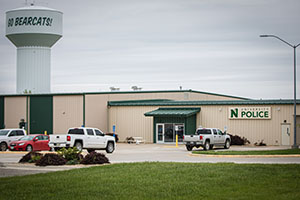 Located on College Park Drive on the north side of campus, the Central Receiving section of the structure is a warehouse facility that houses Central Stores, Mail and Printing Services, and University surplus. In 2014, the building was expanded to the east, and the 7,300-square-foot addition houses the University Police Department and the Office of Purchasing.
Located on College Park Drive on the north side of campus, the Central Receiving section of the structure is a warehouse facility that houses Central Stores, Mail and Printing Services, and University surplus. In 2014, the building was expanded to the east, and the 7,300-square-foot addition houses the University Police Department and the Office of Purchasing.
Total square feet: 32,300
Year opened: 1999
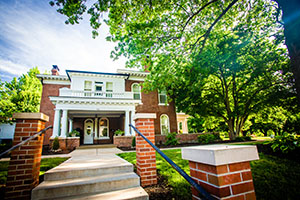 Located on College Avenue, across from the Michael L. Faust Center for Alumni and Friends on the south edge of campus, the Gaunt House was constructed during the early 1870s. The Classical Revival structure has been the residence of University presidents since the founding of the institution in 1905. The house was constructed by Gaunt, a retired sea captain who purchased the land now occupied by the Northwest campus in 1857 and operated a tree nursery on the property. The home, which has undergone multiple renovations and additions, was added to the National Register of Historic Places in 1979.
Located on College Avenue, across from the Michael L. Faust Center for Alumni and Friends on the south edge of campus, the Gaunt House was constructed during the early 1870s. The Classical Revival structure has been the residence of University presidents since the founding of the institution in 1905. The house was constructed by Gaunt, a retired sea captain who purchased the land now occupied by the Northwest campus in 1857 and operated a tree nursery on the property. The home, which has undergone multiple renovations and additions, was added to the National Register of Historic Places in 1979.
Total square feet: 6,673
Year completed: 1875
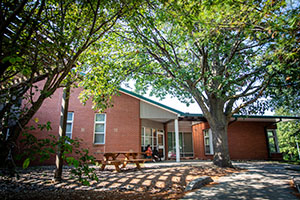
This structure with its pitched roofs in interlocking planes is a distinctive facility on the northwest corner of the campus. It provides a friendly environment to meet the healthcare needs of Northwest students living on and off campus. In 2008, an addition was completed to house Personal Development and Counseling Services and Wellness Services in the same facility.
Total square feet: 7,466
Year opened: 1997
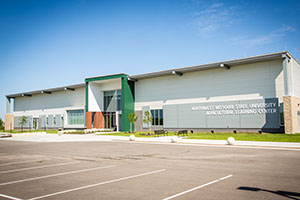
The Agricultural Learning Center is located on the R.T. Wright Farm and houses classrooms, laboratories, exposition and office spaces, and a kitchen. The facility provides opportunities for innovative learning for students, applied research and partnership within the agricultural industry as well as economic, educational, cultural and social engagement activities.
Total square feet: 29,000
Year opened: 2021
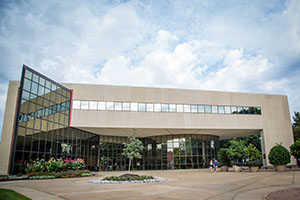 Named for the eighth president of the University, the limestone and glass building is designed to meet the evolving needs of the University and accommodate technological advances in information retrieval systems. The Owens Library is a hub for student activity that houses the Writing Center, Student Success Center, Learning and Teaching Center, International Involvement Center and a Starbucks. As a valuable resource center for learning and research, users have access to online databases; books and a variety of equipment may be checked out, and group and private study areas are available. The library also houses University Archives and special collections.
Named for the eighth president of the University, the limestone and glass building is designed to meet the evolving needs of the University and accommodate technological advances in information retrieval systems. The Owens Library is a hub for student activity that houses the Writing Center, Student Success Center, Learning and Teaching Center, International Involvement Center and a Starbucks. As a valuable resource center for learning and research, users have access to online databases; books and a variety of equipment may be checked out, and group and private study areas are available. The library also houses University Archives and special collections.
Total square feet: 111,498
Year opened: 1983
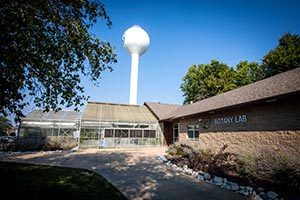 Total square feet: 5,232
Total square feet: 5,232
Year built: 2002
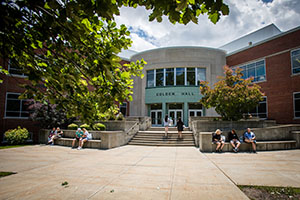 This V-shaped structure is named for Charles J. Colden, the first president of the Board of Regents. Renovated in 1996-97, it contains classrooms and offices for the School of Health Science and Wellness; Melvin D. and Valorie G. Booth School of Business; School of Language, Literature and Writing; and School of Computer Science and Information Systems.
This V-shaped structure is named for Charles J. Colden, the first president of the Board of Regents. Renovated in 1996-97, it contains classrooms and offices for the School of Health Science and Wellness; Melvin D. and Valorie G. Booth School of Business; School of Language, Literature and Writing; and School of Computer Science and Information Systems.
Total square feet: 79,721
Year opened: 1959
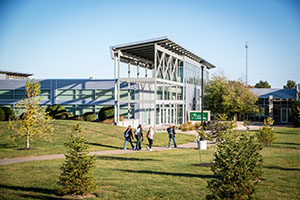 Located on the northeast edge of the campus, this facility was renamed in 2014 to honor Northwest's ninth president. In 2017, the Hubbard Center's west wing, which had been a business incubation center, was remodeled and became the home of the School of Agricultural Sciences. The building also houses classrooms, labs and offices for faculty teaching biology, chemistry and physics.
Located on the northeast edge of the campus, this facility was renamed in 2014 to honor Northwest's ninth president. In 2017, the Hubbard Center's west wing, which had been a business incubation center, was remodeled and became the home of the School of Agricultural Sciences. The building also houses classrooms, labs and offices for faculty teaching biology, chemistry and physics.
Total square feet: 46,710
Year opened: 2009
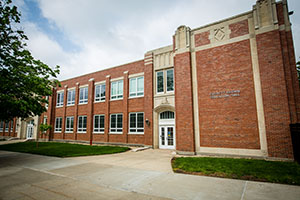 Located west of the J.W. Jones Student Union, this Neo-Gothic structure was renovated and rededicated in 1987 in honor of Everett W. Brown, an alumnus, long-time staff member and eight-term member of the Missouri House of Representatives. Brown Hall houses the School of Education in addition to the Horace Mann Laboratory School and the Phyllis and Richard Leet Center for Children and Families.
Located west of the J.W. Jones Student Union, this Neo-Gothic structure was renovated and rededicated in 1987 in honor of Everett W. Brown, an alumnus, long-time staff member and eight-term member of the Missouri House of Representatives. Brown Hall houses the School of Education in addition to the Horace Mann Laboratory School and the Phyllis and Richard Leet Center for Children and Families.
Total square feet: 70,550
Year opened: 1939
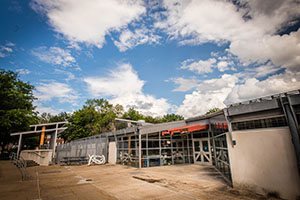 This triangular structure is located south of the Olive DeLuce Fine Arts Building. It houses ceramics, sculpture and welding programs. The building also is equipped with a variety of sophisticated safety, fire prevention and ventilation systems.
This triangular structure is located south of the Olive DeLuce Fine Arts Building. It houses ceramics, sculpture and welding programs. The building also is equipped with a variety of sophisticated safety, fire prevention and ventilation systems.
Total square feet: 11,227
Year opened: 2005
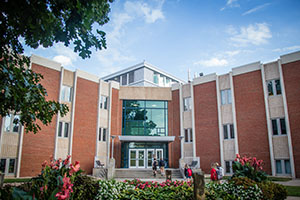 This building, located north of the Administration Building, honors two former department chairs, William T. Garrett, a faculty member from 1927 to 1965 in the former Department of Biological Sciences, and J. Gordon Strong, a faculty member from 1942 to 1964 who led the units housing physical science and mathematics. Renovated in 2000-2001, Garrett-Strong contains laboratories, lecture halls and classrooms, while serving as the home of the School of Natural Sciences and the School of Mathematics and Statistics. The building also houses the University's Geoscience Museum and the Walter M. and Velma C. Troutman Collection.
This building, located north of the Administration Building, honors two former department chairs, William T. Garrett, a faculty member from 1927 to 1965 in the former Department of Biological Sciences, and J. Gordon Strong, a faculty member from 1942 to 1964 who led the units housing physical science and mathematics. Renovated in 2000-2001, Garrett-Strong contains laboratories, lecture halls and classrooms, while serving as the home of the School of Natural Sciences and the School of Mathematics and Statistics. The building also houses the University's Geoscience Museum and the Walter M. and Velma C. Troutman Collection.
Total square feet: 159,787
Year opened: 1968
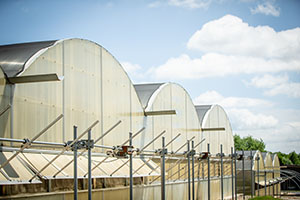 Total square feet: 10,426
Total square feet: 10,426
Year completed: 1989
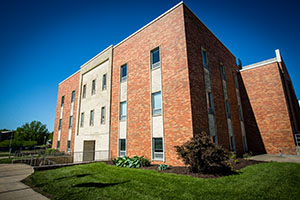 Home to the School of Health Science and Wellness, this building contains classrooms, lab spaces, offices and Martindale Gymnasium, which formerly was the home of Bearcat basketball. The building was remodeled between 1973 and 1975 and an extensive renovation is now underway to modernize and expand the building.
Home to the School of Health Science and Wellness, this building contains classrooms, lab spaces, offices and Martindale Gymnasium, which formerly was the home of Bearcat basketball. The building was remodeled between 1973 and 1975 and an extensive renovation is now underway to modernize and expand the building.
It is named after Nell Martindale Kuchs, who, beginning in the 1920s, was instrumental in developing the women's physical education program at Northwest.
Total square feet: 38,521
Year opened: 1925
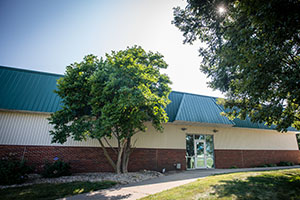 Located on Centennial Drive, north of the Garrett-Strong Science Building, and previously known as the Agriculture Mechanics Building, the McKemy Center was named in 1985 in honor of Alfred McKemy, who served on the Board of Regents from 1975 to 1985, including three consecutive two-year terms as chair. Renovated in 1999 and again in 2023, the facility has served a variety of purposes and now features classrooms and shops for systems management and agricultural mechanics programs.
Located on Centennial Drive, north of the Garrett-Strong Science Building, and previously known as the Agriculture Mechanics Building, the McKemy Center was named in 1985 in honor of Alfred McKemy, who served on the Board of Regents from 1975 to 1985, including three consecutive two-year terms as chair. Renovated in 1999 and again in 2023, the facility has served a variety of purposes and now features classrooms and shops for systems management and agricultural mechanics programs.
Total square feet: 7,492
Year opened: 1977
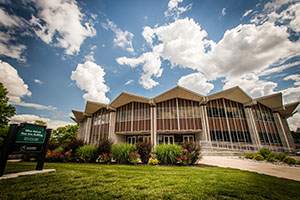 Located on College Avenue on the south side of campus, this circular structure honors Olive DeLuce, a faculty member from 1915 to 1955 who chaired the fine arts department and was a nationally recognized leader in art education. The Fine Arts Building contains the Olive DeLuce Art Gallery, classrooms, rehearsal rooms, art studios and offices for the School of Fine and Performing Arts.
Located on College Avenue on the south side of campus, this circular structure honors Olive DeLuce, a faculty member from 1915 to 1955 who chaired the fine arts department and was a nationally recognized leader in art education. The Fine Arts Building contains the Olive DeLuce Art Gallery, classrooms, rehearsal rooms, art studios and offices for the School of Fine and Performing Arts.
The 549-seat Charles Johnson Theater is named for the first chairman of the Spring Festival of the Arts, which evolved into the year-long Northwest Encore performance series, and houses a two-manual, 21-rank McManis pipe organ.
Total square feet: 91,465
Year opened: 1965
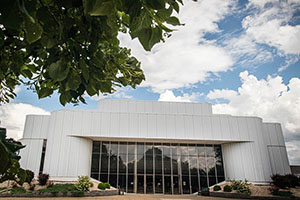 The Ron Houston (pronounced HOUSE-ton) Center for the Performing Arts contains the Mary Linn Auditorium, Studio Theater and other facilities related to the dramatic arts, including a black box performance space, scene shop, costume shop, green room and faculty offices.
The Ron Houston (pronounced HOUSE-ton) Center for the Performing Arts contains the Mary Linn Auditorium, Studio Theater and other facilities related to the dramatic arts, including a black box performance space, scene shop, costume shop, green room and faculty offices.
The Mary Linn Auditorium, the main performance space in the building, is a 1,027-seat theater that can accommodate a full symphony orchestra and Broadway-style stage productions. Its namesake, Mary Casteel Linn, was a member of the Board of Regents from 1975 to 1981 and dedicated patron of the arts.
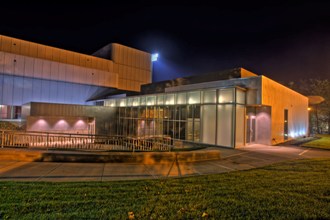 The Studio Theater, a 5,500-square-foot facility addition, was completed in 2008 in conjunction with the renaming of the facility in honor of Houston, a member of the Northwest Foundation Board of Directors from 2002 to 2007 and friend of Northwest who has generously supported numerous building projects and academic initiatives.
The Studio Theater, a 5,500-square-foot facility addition, was completed in 2008 in conjunction with the renaming of the facility in honor of Houston, a member of the Northwest Foundation Board of Directors from 2002 to 2007 and friend of Northwest who has generously supported numerous building projects and academic initiatives.
Total square feet: 60,114
Year opened: 1984
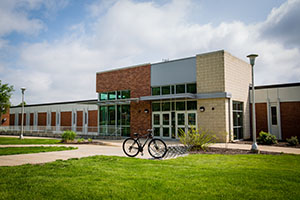 The building includes faculty offices, lecture rooms and laboratories. In 1993, it became the home of the agricultural sciences program after the closure of the Department of Technology, and in 2020, after the School of Agricultural Sciences moved to the Hubbard Center, the ground floor was remodeled to house Veterans Commons. After its use as a warehouse, the lower level of Valk was remodeled between 2007 and 2009 and serves as home to the School of Humanities and Social Sciences.
The building includes faculty offices, lecture rooms and laboratories. In 1993, it became the home of the agricultural sciences program after the closure of the Department of Technology, and in 2020, after the School of Agricultural Sciences moved to the Hubbard Center, the ground floor was remodeled to house Veterans Commons. After its use as a warehouse, the lower level of Valk was remodeled between 2007 and 2009 and serves as home to the School of Humanities and Social Sciences.
The building is named for Donald N. Valk, a faculty member and chair of the former industrial arts department from 1932 to 1970. He also was an architect and designed several campus buildings, including the former Mabel Cook Home Management House, Wells Hall, the Wesley Student Center and the building bearing his name.
Total square feet: 47,994
Year opened: 1970
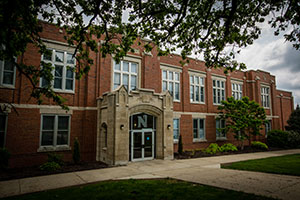 Previously dedicated as the University's library, Wells Hall is named for Edwin C. Wells, a librarian at the institution from 1911 until the 1940s. After the 1983 opening of B.D. Owens Library, the building was converted into a classroom building and houses the School of Communication and Mass Media. It is home to Student Media programs, which include KZLX radio, KNWT TV, The Northwest Missourian newspaper and Tower yearbook. Northwest's National Public Radio affiliate, KXCV-KRNW, broadcasts from the second floor of the building. A 2015 remodel of classroom space resulted in the opening of the Michael L. Faust Media Lab. The building also houses the Warren Stucki Museum of Broadcasting.
Previously dedicated as the University's library, Wells Hall is named for Edwin C. Wells, a librarian at the institution from 1911 until the 1940s. After the 1983 opening of B.D. Owens Library, the building was converted into a classroom building and houses the School of Communication and Mass Media. It is home to Student Media programs, which include KZLX radio, KNWT TV, The Northwest Missourian newspaper and Tower yearbook. Northwest's National Public Radio affiliate, KXCV-KRNW, broadcasts from the second floor of the building. A 2015 remodel of classroom space resulted in the opening of the Michael L. Faust Media Lab. The building also houses the Warren Stucki Museum of Broadcasting.
Total square feet: 56,335
Year opened: 1938
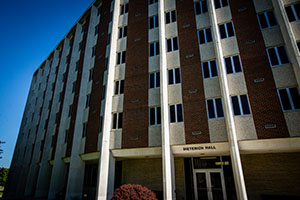 Named for Herbert Dieterich, who served the University's education department from 1928 through 1969, this seven-story residence hall is one of three high-rise structures located on the northwest side of the University campus.
Named for Herbert Dieterich, who served the University's education department from 1928 through 1969, this seven-story residence hall is one of three high-rise structures located on the northwest side of the University campus.
Total square feet: 69,468
Year opened: 1971
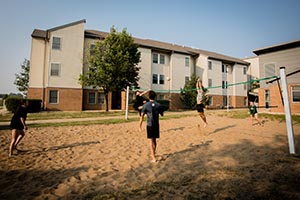 Forest Village Apartments is a complex comprised of apartment buildings - Hawthorn, Sycamore and Willow - located on the north portion of the campus. The complex contains a community building providing lounges and meeting facilities for residents, a convenience store, mailboxes and staff offices. The fully furnished apartments consist of two‐ and four-bedroom styles; they include a living, storage, kitchen and dining spaces. The units contain a washer, dryer, refrigerator, dishwasher, garbage disposal, microwave and stove.
Forest Village Apartments is a complex comprised of apartment buildings - Hawthorn, Sycamore and Willow - located on the north portion of the campus. The complex contains a community building providing lounges and meeting facilities for residents, a convenience store, mailboxes and staff offices. The fully furnished apartments consist of two‐ and four-bedroom styles; they include a living, storage, kitchen and dining spaces. The units contain a washer, dryer, refrigerator, dishwasher, garbage disposal, microwave and stove.
Year opened: 2004
Total square feet:
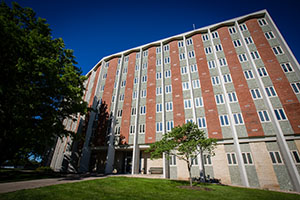 Named for Katherine Franken, a member of the education department from 1921 until her retirement in 1952, this seven-story coed residence hall is one of three high-rise structures located on the northwest side of the University campus.
Named for Katherine Franken, a member of the education department from 1921 until her retirement in 1952, this seven-story coed residence hall is one of three high-rise structures located on the northwest side of the University campus.
Total square feet: 69,525
Year opened: 1966
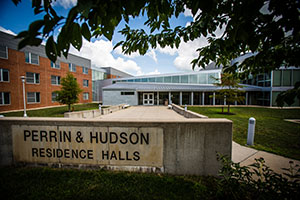 This structure houses nearly 500 first-year students. It retains the names of residential facilities that previously stood on the same footprint and were demolished to construct the current building. The building's south residential wing is named for the first woman registrar, Nell Hudson, and the north wing is named for Alice R. Perrin, who joined the Fifth District Normal School staff in 1911, served as its first dean of women and remained on staff until her death in 1927.
This structure houses nearly 500 first-year students. It retains the names of residential facilities that previously stood on the same footprint and were demolished to construct the current building. The building's south residential wing is named for the first woman registrar, Nell Hudson, and the north wing is named for Alice R. Perrin, who joined the Fifth District Normal School staff in 1911, served as its first dean of women and remained on staff until her death in 1927.
Total square feet: 167,144
Year opened: 2007
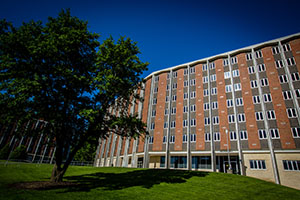 Named for Chloe Millikan, an elementary education faculty member from 1928 to 1961, this seven-story residence hall is one of three high-rise structures located on the northwest side of campus.
Named for Chloe Millikan, an elementary education faculty member from 1928 to 1961, this seven-story residence hall is one of three high-rise structures located on the northwest side of campus.
Total square feet: 69,491
Year opened: 1971
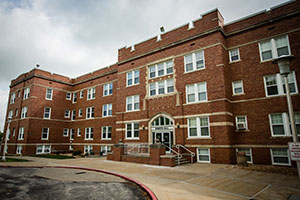 Roberta Hall was constructed during 1922 and opened to house female students in January 1923. Today, it provides housing for members of Northwest's social sororities and is named for Roberta Steel, a student who lost her life as a result of injuries suffered during a 1951 explosion and fire that heavily damaged the building. The building underwent an extensive renovation in 1993-94.
Roberta Hall was constructed during 1922 and opened to house female students in January 1923. Today, it provides housing for members of Northwest's social sororities and is named for Roberta Steel, a student who lost her life as a result of injuries suffered during a 1951 explosion and fire that heavily damaged the building. The building underwent an extensive renovation in 1993-94.
Total square feet: 71,218
Year opened: 1923
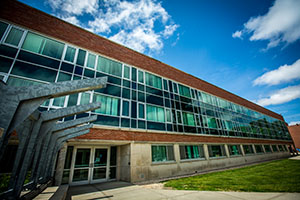 This residence hall contains Wilson Hall, the west wing named for Lon Wilson, former dean of men; Richardson Hall, the south wing named for fourth University President Ira Richardson; and Cook Hall, the east wing named for T.H. Cook, a longtime history faculty member.
This residence hall contains Wilson Hall, the west wing named for Lon Wilson, former dean of men; Richardson Hall, the south wing named for fourth University President Ira Richardson; and Cook Hall, the east wing named for T.H. Cook, a longtime history faculty member.
During 1999-2000, these connected structures were completely renovated and transformed to provide students with more modern dormitory living.
Total square feet: 82,637
Year opened: 1962
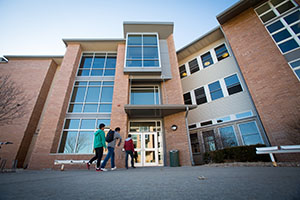 Tower Suites is located on the west side of campus adjacent to the high-rise residence halls and The Station. The residential complex consists of two three-story buildings and provides upperclass students with enhanced housing options.
Tower Suites is located on the west side of campus adjacent to the high-rise residence halls and The Station. The residential complex consists of two three-story buildings and provides upperclass students with enhanced housing options.
Year opened: 2004
Total square feet:
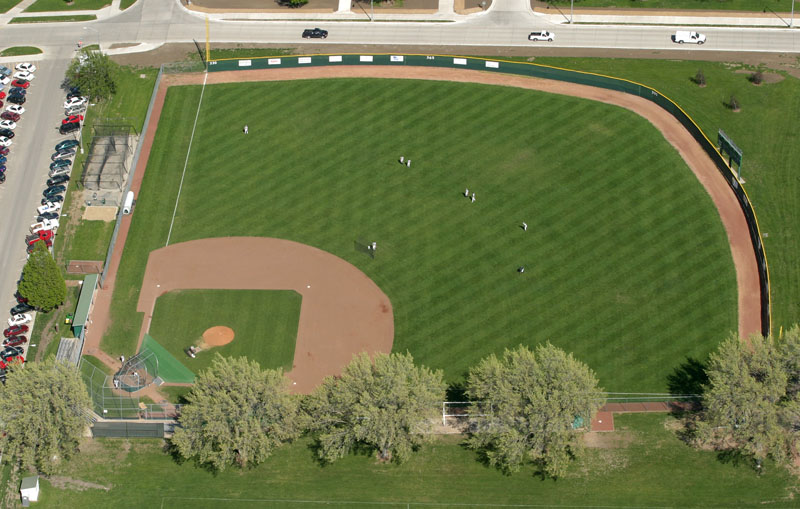 Bearcat Baseball Field is the home of the Bearcat baseball team and is located on the west side of campus. It has a grass infield, scoreboard and press box facility.
Bearcat Baseball Field is the home of the Bearcat baseball team and is located on the west side of campus. It has a grass infield, scoreboard and press box facility.
The dugouts were replaced in 2017, and the backstops were replaced in 2018.
Total square feet: 640
Year opened: 1968
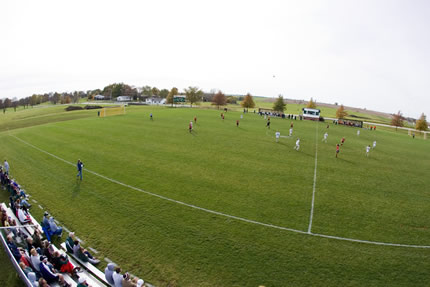 The home of Northwest women's soccer, Bearcat Pitch was constructed in 1999 for the inaugural season of Bearcat soccer. The facility seats 600 spectators and features a weather-protected press box with a full sound system. Bearcat Pitch also includes weather-protected team areas and benches. Prior to the 2020 season, the grass field surface was replaced with artificial turf.
The home of Northwest women's soccer, Bearcat Pitch was constructed in 1999 for the inaugural season of Bearcat soccer. The facility seats 600 spectators and features a weather-protected press box with a full sound system. Bearcat Pitch also includes weather-protected team areas and benches. Prior to the 2020 season, the grass field surface was replaced with artificial turf.
Total square feet: 600
Year opened: 1999
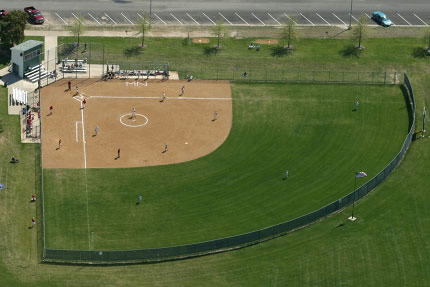 The softball field is located on the west side of campus and is home to the Bearcat softball program. It has a dirt infield, scoreboard and press box facility.
The softball field is located on the west side of campus and is home to the Bearcat softball program. It has a dirt infield, scoreboard and press box facility.
Total square feet: 456
Year opened: 1996
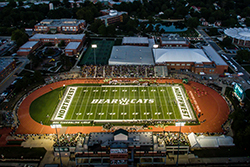 The home of Bearcat football, Bearcat Stadium offers permanent seating for 6,200 fans and a total capacity of 7,500. The playing surface is known as Mel Tjeerdsma Field, renamed in 2007 in honor of Northwest's head football coach from 1994 to 2010, and the track that encircles the field is called Herschel Neil Track, in honor of a Bearcat track and field standout of the 1930s. The stadium also houses the Loch-O’Rourke Family Center, a gathering space housing championship trophies on the mezzanine level, and the Navy V-5/V-12 Combat Information Center, a classroom facility under the west grandstand that serves as a tribute to individuals who prepared for Navy combat duty at Northwest, as well as 10 luxury suites.
The home of Bearcat football, Bearcat Stadium offers permanent seating for 6,200 fans and a total capacity of 7,500. The playing surface is known as Mel Tjeerdsma Field, renamed in 2007 in honor of Northwest's head football coach from 1994 to 2010, and the track that encircles the field is called Herschel Neil Track, in honor of a Bearcat track and field standout of the 1930s. The stadium also houses the Loch-O’Rourke Family Center, a gathering space housing championship trophies on the mezzanine level, and the Navy V-5/V-12 Combat Information Center, a classroom facility under the west grandstand that serves as a tribute to individuals who prepared for Navy combat duty at Northwest, as well as 10 luxury suites.
Although the current facility was completed in 2003, the field location opened in 1917 and is believed to be the longest-running continuous site for football in NCAA Division II. The athletic field was named Memorial Stadium in 1949 and then was Rickenbrode Stadium, in honor of longtime registrar and secretary to the Board of Regents William A. Rickenbrode, from 1961 until 2004, when it took its current name in honor of all Bearcat fans.
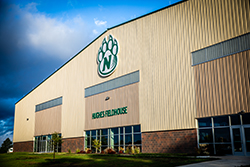 The Hughes Fieldhouse stands as the single largest public-private partnership in Northwest's history and one of the largest such projects in the region ever. The $21 million facility, which features a 90-yard practice turf field and 300-meter indoor competition track, serves a multitude of social, recreational and economic needs for the University and region.
The Hughes Fieldhouse stands as the single largest public-private partnership in Northwest's history and one of the largest such projects in the region ever. The $21 million facility, which features a 90-yard practice turf field and 300-meter indoor competition track, serves a multitude of social, recreational and economic needs for the University and region.
While it contains numerous named spaces honoring University donors, the facility is named for the Carl and Cheryl Hughes Family Foundation, which provided leading support for its construction. Carl Hughes is a 1976 alumnus, and his wife, Cheryl, attended the University.
Total square feet: 137,250
Year opened: 2018
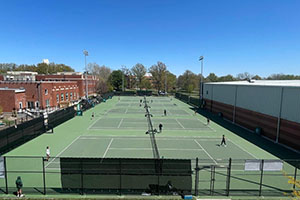 Expanded in 2019 and formerly the home of the Bearcat men's and women's tennis programs, the Grube Courts are being repurposed for recreational uses, including tennis, pickleball, basketball and kickball.
Expanded in 2019 and formerly the home of the Bearcat men's and women's tennis programs, the Grube Courts are being repurposed for recreational uses, including tennis, pickleball, basketball and kickball.
Grube, a member of the Northwest faculty from 1947 to 1973, was a long-time Department of English chair and the first varsity tennis coach at the University.
Total square feet: 260
Year completed: 1981
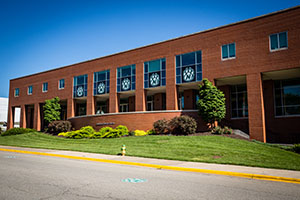 Originally named Lamkin Gymnasium for the University's fifth president, Uel W. Lamkin, the facility underwent a renovation and expansion in 1993-1994. It includes Bearcat Arena, the Student Recreation Center and the adjoining Robert and Virginia Foster Fitness Center as well as offices, classrooms and other spaces supporting the Department of Athletics and the School of Health Science and Wellness.
Originally named Lamkin Gymnasium for the University's fifth president, Uel W. Lamkin, the facility underwent a renovation and expansion in 1993-1994. It includes Bearcat Arena, the Student Recreation Center and the adjoining Robert and Virginia Foster Fitness Center as well as offices, classrooms and other spaces supporting the Department of Athletics and the School of Health Science and Wellness.
Bearcat Arena is home to the men's and women's basketball programs and Bearcat volleyball program, and it has a seating capacity of 2,500 spectators. The facility stages University commencement ceremonies and professional concerts, among other activities, in addition to providing practice facilities for Bearcat athletics teams.
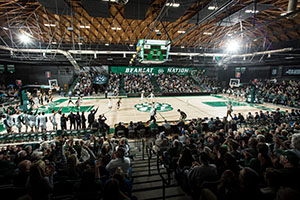 The facility's lower level includes the Harr Athletic Success Center and the David and Susan Colt Athletic Training Room, locker rooms and weight training facilities.
The facility's lower level includes the Harr Athletic Success Center and the David and Susan Colt Athletic Training Room, locker rooms and weight training facilities.
The Student Recreation Center was added in 1993-1994; it includes three basketball courts, five racquetball/handball courts and a suspended track.
Total square feet: 137,994
Year completed: 1959
The tennis center was constructed in 2025 and is home to the Bearcat men's and women's tennis programs.
The facility is named for Mark Rosewell, who began coaching men’s and women’s tennis at Northwest in 1984 and accumulated more than 1,200 victories with 30 regular season MIAA titles, 14 regional titles and 45 NCAA tournament appearances. He is a 2025 inductee of the Missouri Sports Hall of Fame.
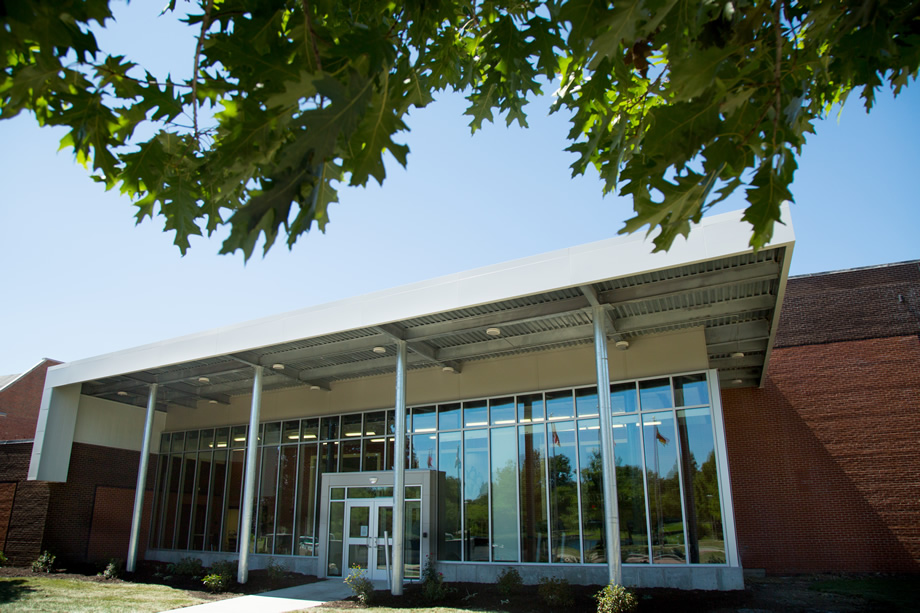 The structure initially opened as the 15,000-square-foot Robert P. Foster Aquatic Center, which closed in 2012. After an extensive remodeling, the facility reopened in 2015, as the Foster Fitness Center, consisting of open floor space to accommodate cardio and weight lifting machines, a human performance lab and classroom space. The facility includes a group exercise room and a 2,300-square-foot mezzanine with cardio equipment and windows that provide natural lighting to the facility. It includes locker rooms and an enclosed walkway connecting the Student Recreation Center for added convenience. It is named for Foster, the seventh University president, and his wife.
The structure initially opened as the 15,000-square-foot Robert P. Foster Aquatic Center, which closed in 2012. After an extensive remodeling, the facility reopened in 2015, as the Foster Fitness Center, consisting of open floor space to accommodate cardio and weight lifting machines, a human performance lab and classroom space. The facility includes a group exercise room and a 2,300-square-foot mezzanine with cardio equipment and windows that provide natural lighting to the facility. It includes locker rooms and an enclosed walkway connecting the Student Recreation Center for added convenience. It is named for Foster, the seventh University president, and his wife.
The Anita Aldrich Human Performance Lab inside the facility is named for Dr. Anita Aldrich, a 1936 Northwest graduate who dedicated herself to health, physical education and recreation education. During a career spanning 47 years, she served as a teacher and administrator of physical education programs in King City, St. Joseph and Kansas City in Missouri, and at Indiana University. She was appointed in 1961 as an advisor to President John F. Kennedy's Fitness Council and served as president during 1962-1963 of the American Alliance for Health, Physical Education and Recreation to which she was later named an honor fellow.
Total square feet: 19,490
Year completed: 1981
The complex comprises athletics facilities on the south side of campus along College Drive: Bearcat Stadium, Lamkin Activity Center, the Mark Rosewell Tennis Center and Martindale Hall. It is named for Ryland Milner, a long-time coach, athletic director and alumnus.
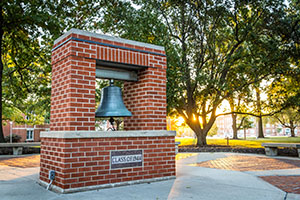 The class of 1948 gifted Northwest with a memorial bronze bell in honor of soldiers who fought and died during World War II, especially those fallen soldiers who attended Northwest or who once lived in northwest Missouri. The bronze bell has since heralded Northwest achievements and celebrations and is mournfully chimed to honor the passing of students.
The class of 1948 gifted Northwest with a memorial bronze bell in honor of soldiers who fought and died during World War II, especially those fallen soldiers who attended Northwest or who once lived in northwest Missouri. The bronze bell has since heralded Northwest achievements and celebrations and is mournfully chimed to honor the passing of students.
The Bell of ’48 is located between the Memorial Bell Tower and the Administration Building.
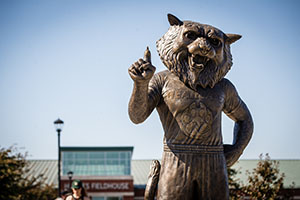 The statue depicting Northwest mascot Bobby Bearcat stands east of the Carl and Cheryl Hughes Fieldhouse near College Park Drive and was placed in 2022 to honor Dr. John and Denise Jasinski, the University's 10th president and first lady. The bronze statue stands about 8 feet tall and weighs about 650 pounds.
The statue depicting Northwest mascot Bobby Bearcat stands east of the Carl and Cheryl Hughes Fieldhouse near College Park Drive and was placed in 2022 to honor Dr. John and Denise Jasinski, the University's 10th president and first lady. The bronze statue stands about 8 feet tall and weighs about 650 pounds.
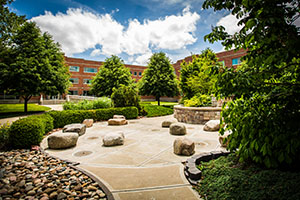 Centennial Garden was completed in 2005 as part of the University's commemoration of its centennial. Located adjacent to South Complex, it serves as a gathering place and features fountains, a firepit and a series of pillars paying tribute to residence halls that once stood to its north.
Centennial Garden was completed in 2005 as part of the University's commemoration of its centennial. Located adjacent to South Complex, it serves as a gathering place and features fountains, a firepit and a series of pillars paying tribute to residence halls that once stood to its north.
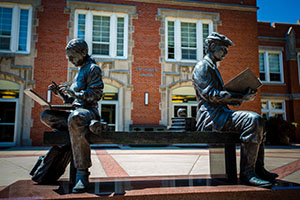 The bronze, life-sized sculpture to commemorate the University's centennial is located on the east plaza of the J.W. Jones Student Union and depicts two students – one in 1905 and one in 2005 – studying on a bench.
The bronze, life-sized sculpture to commemorate the University's centennial is located on the east plaza of the J.W. Jones Student Union and depicts two students – one in 1905 and one in 2005 – studying on a bench.
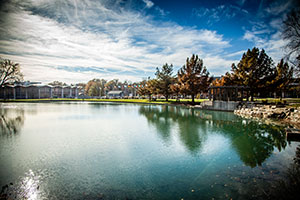 Colden Pond is located on the south portion of campus, near Colden Hall and the Joyce and Harvey White International Plaza. It was originally called Lamkin Lake after Northwest President Uel Lamkin, who led the institution from 1921 to 1945, was inspired to construct the water feature, but the pond became known as “Lamkin’s Folly” during its early days because it did not retain water. After the problem was resolved, the pond was stocked with fish and became a pleasant oasis for the campus community.
Colden Pond is located on the south portion of campus, near Colden Hall and the Joyce and Harvey White International Plaza. It was originally called Lamkin Lake after Northwest President Uel Lamkin, who led the institution from 1921 to 1945, was inspired to construct the water feature, but the pond became known as “Lamkin’s Folly” during its early days because it did not retain water. After the problem was resolved, the pond was stocked with fish and became a pleasant oasis for the campus community.
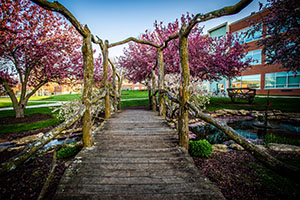 The Northwest Peace Pavilion at the northwest edge of the pond was constructed in memory of Karen Hawkins, a Northwest student murdered in 1995, as a gift from the Class of 1995; the adjacent Kissing Bridge is a small rustic wood bridge that serves as a destination for first dates, engagement proposals and the occasional wedding. In the 2000s, Colden Pond underwent renovations to expand and deepen it, creating a better environment for fish and to prevent the growth of algae.
The Northwest Peace Pavilion at the northwest edge of the pond was constructed in memory of Karen Hawkins, a Northwest student murdered in 1995, as a gift from the Class of 1995; the adjacent Kissing Bridge is a small rustic wood bridge that serves as a destination for first dates, engagement proposals and the occasional wedding. In the 2000s, Colden Pond underwent renovations to expand and deepen it, creating a better environment for fish and to prevent the growth of algae.
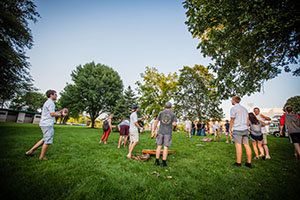 College Park is located on the west side of the campus along College Park Drive and provides space for a variety of University and community activities, including Bearcat Zone tailgate activities prior to home football games.
College Park is located on the west side of the campus along College Park Drive and provides space for a variety of University and community activities, including Bearcat Zone tailgate activities prior to home football games.
An 833-square-foot shelter space was completed in 1980. In 2005, an 896-square-foot restroom facility and the Raymond J. Courter College Park Pavilion were added.
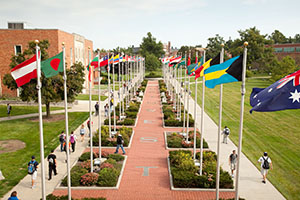 Completed entirely through donations, the Joyce and Harvey White International Plaza was constructed in 1998 as a tribute to Northwest's global enrollment. The International Plaza, located on the south edge of campus between Martindale Hall and Colden Pond, features 54 poles that follow United Nations protocol and display the flags of current Northwest students and alumni. The International Plaza also includes a wall of donors and five clocks showing the times in Maryville and four other cities across the world.
Completed entirely through donations, the Joyce and Harvey White International Plaza was constructed in 1998 as a tribute to Northwest's global enrollment. The International Plaza, located on the south edge of campus between Martindale Hall and Colden Pond, features 54 poles that follow United Nations protocol and display the flags of current Northwest students and alumni. The International Plaza also includes a wall of donors and five clocks showing the times in Maryville and four other cities across the world.
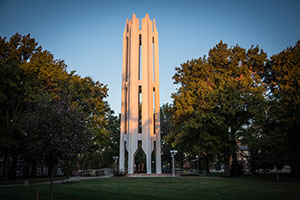
Centrally located on the Northwest campus, the open-air Memorial Bell Tower is an iconic structure that was constructed to memorialize students, faculty and alumni, including those killed while serving in the military. University President Robert Foster announced plans to build the Bell Tower in 1965, and it was completed in 1971 entirely with funds donated by University alumni and friends.
Constructed using pre-cast concrete, the Bell Tower stands 100 feet tall and measures 25 feet in diameter. It also features brass memorial plaques and an electronic carillon. It underwent renovations in 1989 and again in 2004 to make structural repairs and improve handicapped accessibility.
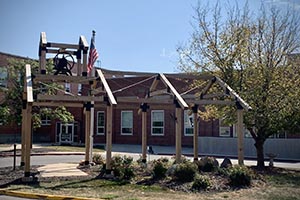 This memorial resides west of Everett W. Brown Education Hall and symbolizes a one-room schoolhouse. Placed in 2007, the memorial houses a bell from the Marietta School in rural Holt County near Craig, Missouri, in honor of Brown's support for Missouri education as a public school teacher and administrator, Northwest staff member for 29 years and legislator in the Missouri General Assembly for 17 years.
This memorial resides west of Everett W. Brown Education Hall and symbolizes a one-room schoolhouse. Placed in 2007, the memorial houses a bell from the Marietta School in rural Holt County near Craig, Missouri, in honor of Brown's support for Missouri education as a public school teacher and administrator, Northwest staff member for 29 years and legislator in the Missouri General Assembly for 17 years.
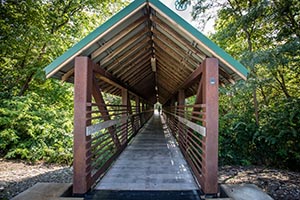 A pedestrian bridge, constructed in 2004, runs west of the Garrett-Strong Science Building and connects the north and south portions of campus.
A pedestrian bridge, constructed in 2004, runs west of the Garrett-Strong Science Building and connects the north and south portions of campus.
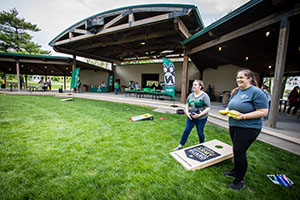 Located west of the Ron Houston Center for the Performing Arts in College Park, the Courter Pavilion is an outdoor performance and presentation space that hosts a variety of University and community gatherings throughout the year, including Bearcat Zone tailgate activities prior to each home football game.
Located west of the Ron Houston Center for the Performing Arts in College Park, the Courter Pavilion is an outdoor performance and presentation space that hosts a variety of University and community gatherings throughout the year, including Bearcat Zone tailgate activities prior to each home football game.
It is named for Northwest's longtime vice president for finance whose influence during 37 years of service in the University's finance area, until his retirement in 2009, guided master planning for capital construction projects resulting in additions or improvements to nearly 30 campus buildings and structures.
Total square feet: 4,787
Year built: 2005
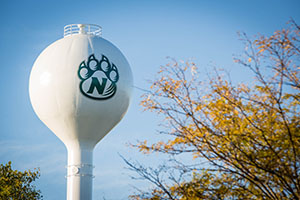 The water storage tower adjacent of the pedestrian bridge and west of the Garrett-Strong Science Building was constructed in 1967.
The water storage tower adjacent of the pedestrian bridge and west of the Garrett-Strong Science Building was constructed in 1967.
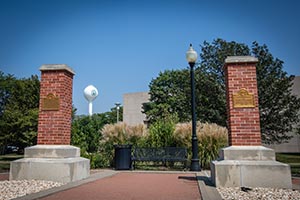 The World War I Memorial Plaza lies west of the B.D. Owens Library, at the corner of College Park Avenue and Memorial Drive.
The World War I Memorial Plaza lies west of the B.D. Owens Library, at the corner of College Park Avenue and Memorial Drive.
It originated in 1919 when the Nodaway County Chapter of the Daughters of the American Revolution planted trees and raised money for brick pillars and plaques to display names of 46 soldiers who died in the World War I. In the 1970s, the pillars were removed during a Maryville street renovation project; eventually, they were installed on the Northwest campus and rededicated in 2006.
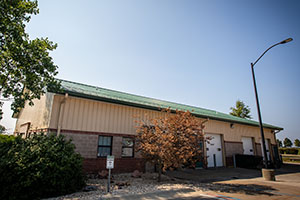 The Athletic Grounds Support Building is located west of the Ron Houston Center for the Performing Arts. It houses athletic field equipment, paint supplies, lawn equipment and employee support function
The Athletic Grounds Support Building is located west of the Ron Houston Center for the Performing Arts. It houses athletic field equipment, paint supplies, lawn equipment and employee support function
Total square feet: 5,847
Year built: 2007
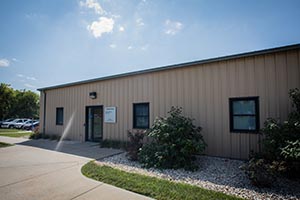 This building is one of two structures on the northwest section of the campus, near the Support Services Building, that houses Facility Services units. The south structure comprises staff members working in capital programs and the sign shop.
This building is one of two structures on the northwest section of the campus, near the Support Services Building, that houses Facility Services units. The south structure comprises staff members working in capital programs and the sign shop.
Total square feet: 3,250
Year built: 1980
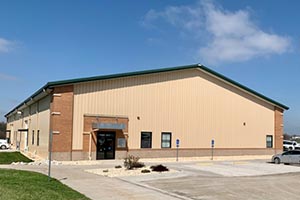 This building is one of two structures on the northwest section of the campus, near the Support Services Building, that houses Facility Services units. The north structure comprises administrative and staff offices related to access control, custodial services, energy management, maintenance, sustainability and transportation.
This building is one of two structures on the northwest section of the campus, near the Support Services Building, that houses Facility Services units. The north structure comprises administrative and staff offices related to access control, custodial services, energy management, maintenance, sustainability and transportation.
Total square feet: 26,356
Year completed: 2009

Total square feet: 6,508
Year built: 1968
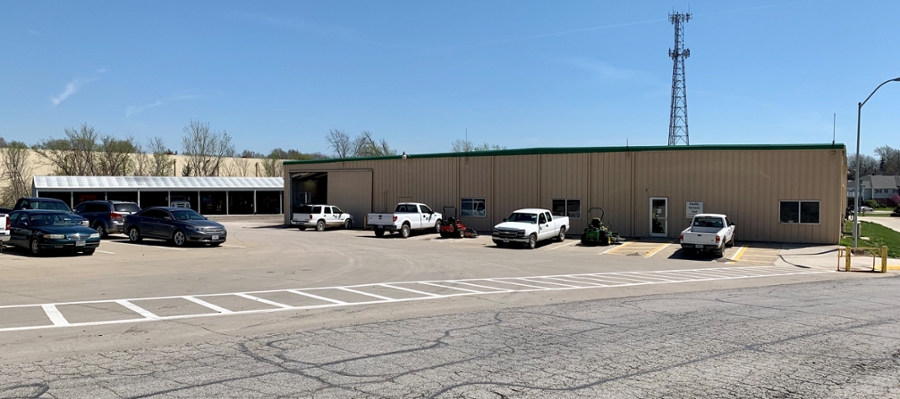 Facility Services East is a support building servicing Facility Services operations.
Facility Services East is a support building servicing Facility Services operations.
Total square feet: 21,140
Year built: 1979
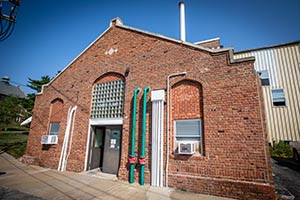 The University's power plant was renamed in 2019 for Redden, who dedicated 45 years of service to Northwest and played a key role in launching its innovative alternative fuels program.
The University's power plant was renamed in 2019 for Redden, who dedicated 45 years of service to Northwest and played a key role in launching its innovative alternative fuels program.
The original power plant was completed around 1910 in conjunction with the Administration Building to support the new campus and used as coal-fired operation until its conversion to wood fuel. The facility is connected by a 2-mile network of utility tunnels throughout the campus that carry steam as well as HVAC-chilled water to more than 30 buildings.
Total square feet: 6,233 (central plant, 18,790 square feet)
Year built: 1996

Total square feet: 3,024
Year built: 2000
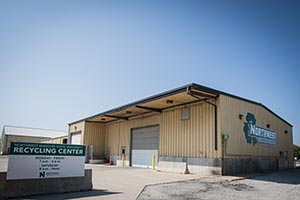 The Recycling Center is a support facility providing community recycling of plastic containers, aluminum cans, mixed paper, cardboard and glass.
The Recycling Center is a support facility providing community recycling of plastic containers, aluminum cans, mixed paper, cardboard and glass.
Total square feet: 21,510
Year built: 1989
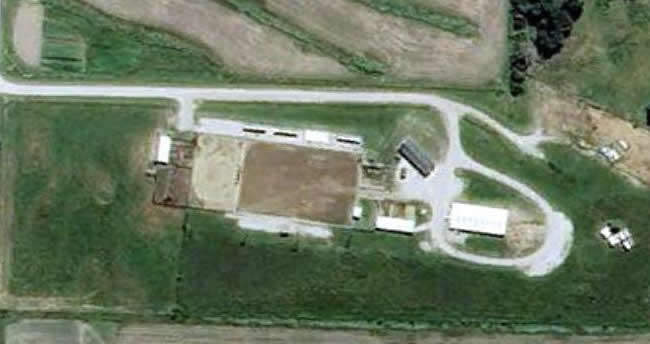
The arena, located west of Icon Road on 16th Street, is named for a local equestrian enthusiast and former president of the Missouri Quarter Horse Association who died from a horse-related accident in 1995; Ed Phillips' son, John, was a member of the Northwest Rodeo Club team at the time.
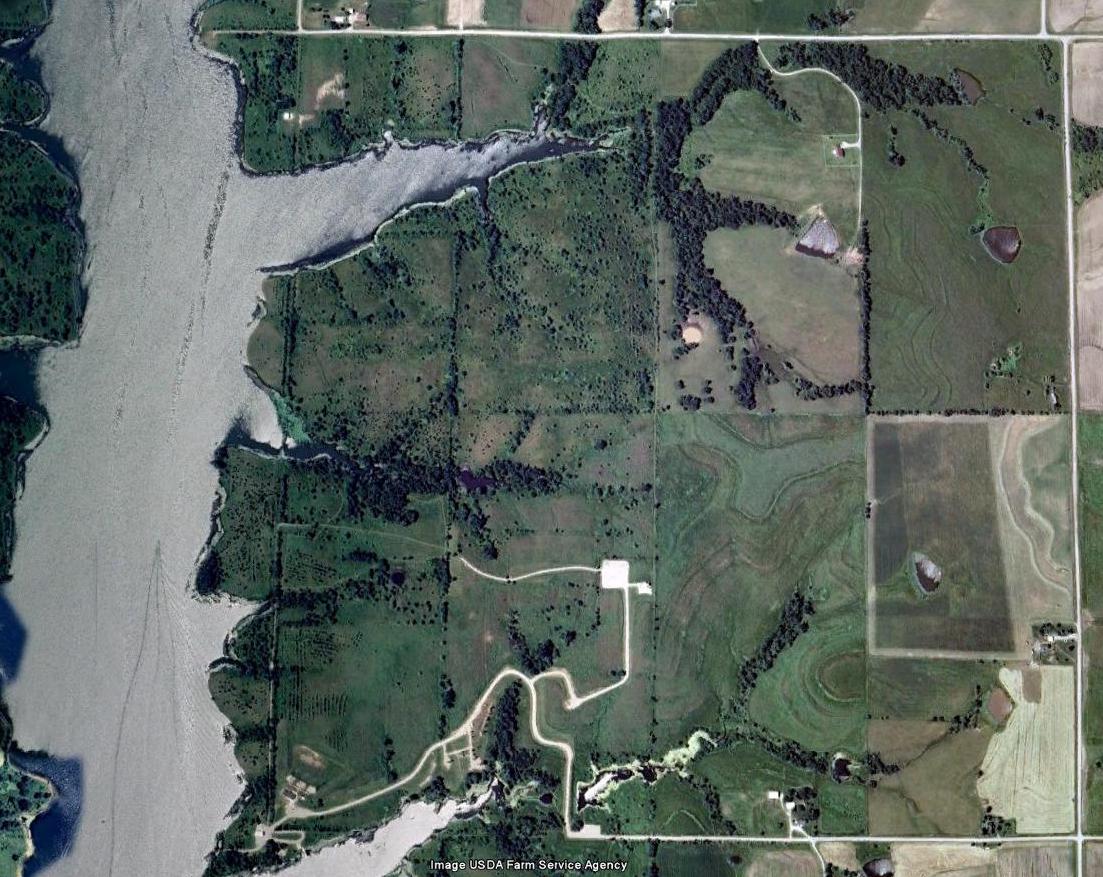 A 315-acre rural lakefront tract of land located at Mozingo Lake Recreation Park, MOERA offers student and community education and recreation activities.
A 315-acre rural lakefront tract of land located at Mozingo Lake Recreation Park, MOERA offers student and community education and recreation activities.
In addition to walking trails and gravel roads throughout the acreage, facilities include a ropes challenge course, courtesy dock, trap skeet range that may be used for target archery, a biology research area, and the Jim Smeltzer Astronomy Observation Area with a small building and outdoor telescope viewing area.
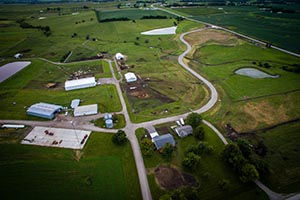 The University's 448-acre crop and livestock operation is located about two miles north of the main campus, at Highway 71 and Icon Road. Acquired in 1971, the farm is named for Wright, who was a faculty member and chair of the agriculture department between 1935 and 1964.
The University's 448-acre crop and livestock operation is located about two miles north of the main campus, at Highway 71 and Icon Road. Acquired in 1971, the farm is named for Wright, who was a faculty member and chair of the agriculture department between 1935 and 1964.
The Wright Farm – which is home to beef, swine, dairy and sheep enterprises as well as row and forage crops – provides students with profession-based experience in farm management. The centerpiece of the farm is the 29,000-square-foot Agricultural Learning Center, which opened in 2021 and houses classrooms, laboratories, exposition and office spaces, and a kitchen.